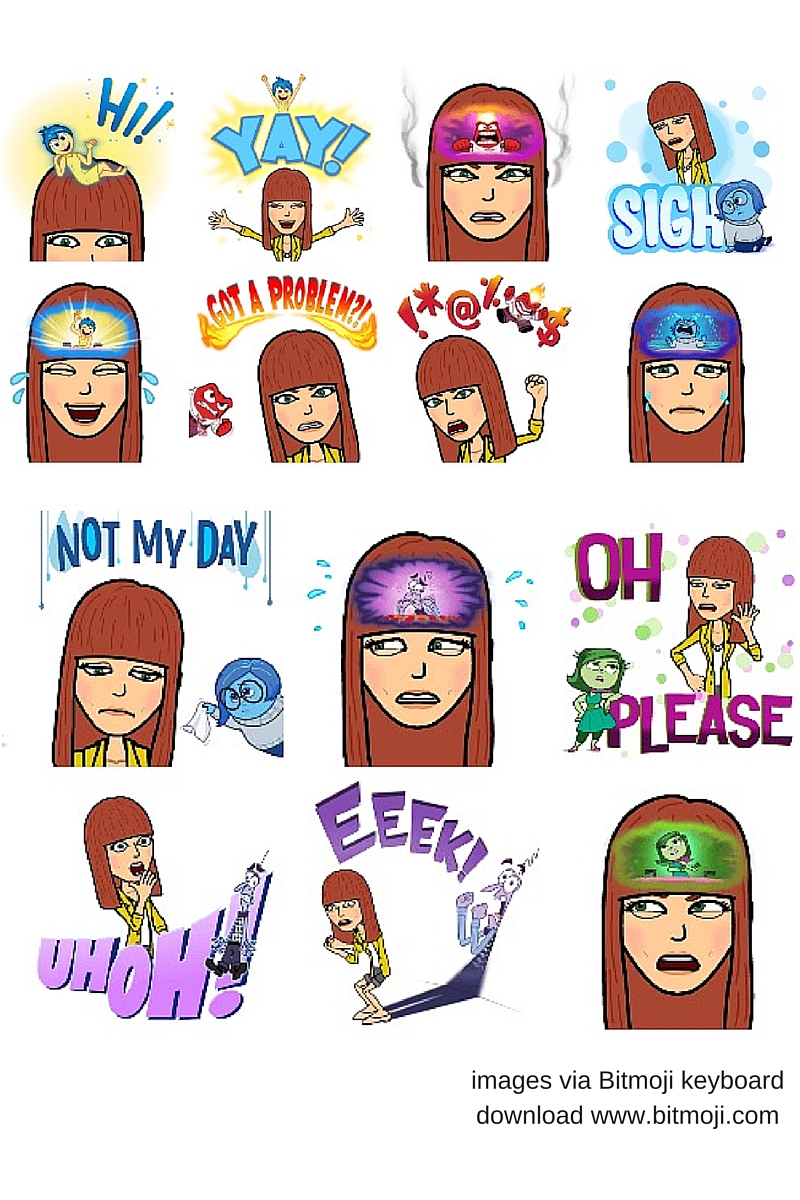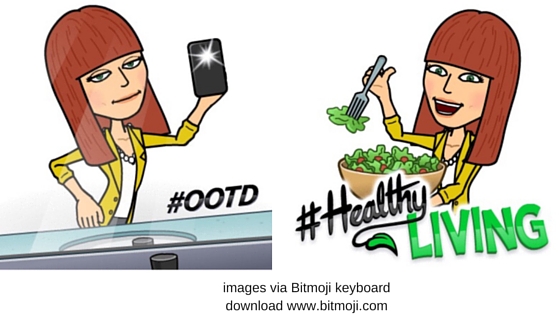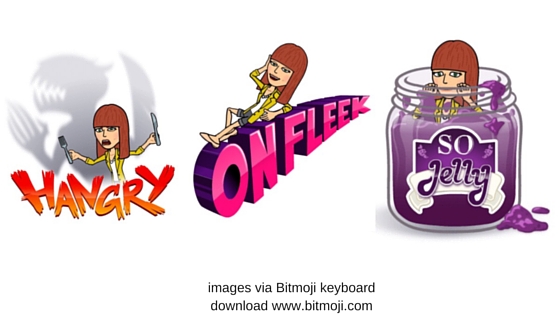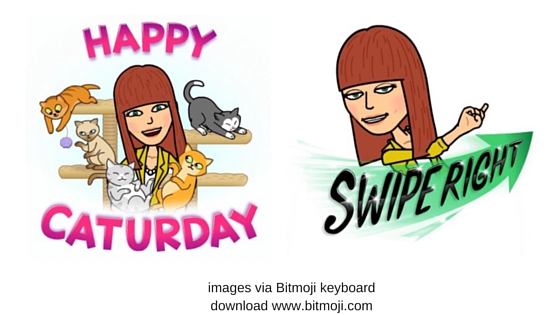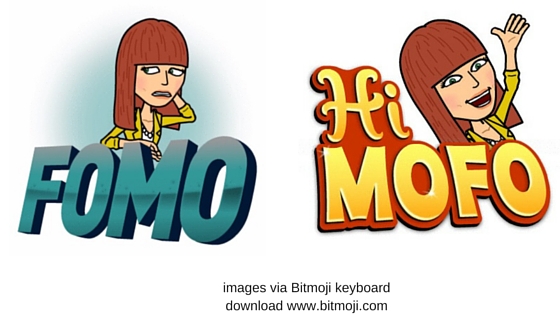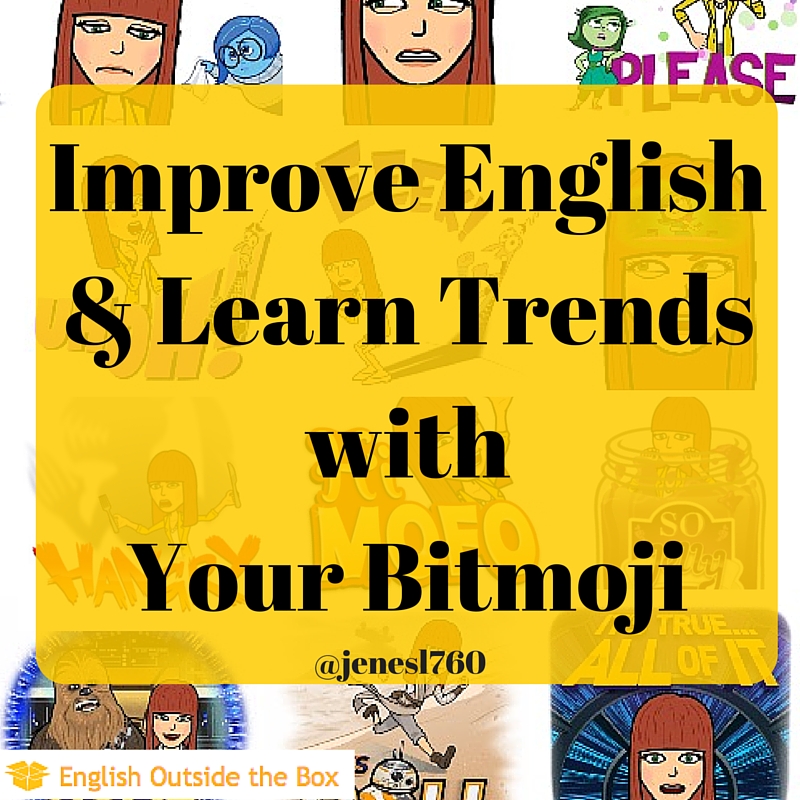
Learn English and 5 Trends with your Bitmoji Keyboard.
Before you start, or I should say continue reading, I want you to look around the area you are: your desk, couch, table, or wherever you may be. How close is your phone? I would bet you a million dollars (if I had a million dollars or liked gambling) that your phone is very close to you. Am I right?
Chances are you have already used your phone a few times today, because we are addicted to our phones! Yes, according to the New York Post, smartphone addiction is real and smartphone use is expected to increase 7.9% in 2016. This means that the average time spent holding this beloved (*very loved*) device, and looking into its screen is estimated to be 3 hours and 8 minutes per day. This number is insane, but it’s the truth. So rather than focusing on why this could be a negative thing, let’s turn it into a positive learning experience.
You already use your phone daily, maybe you’re even reading this post from your phone now, so let me take some time to tell you HOW to use your smartphone to learn and improve English. I am sure you have already seen blog posts about the many different apps for learning, in fact, I have one here. However, this post is going to be different because it will hopefully be a new way to learn (unless you read this post about learning with your Avatar), and an exciting way to improve your skills.
As I just mentioned and linked, I posted in October about learning English with your Bitmoji avatar. I taught you how to increase your knowledge with idioms and expressions, the post reviewed “texting” language, and introduced some new vocabulary to express yourself. There were over 50 new words and expressions. The wonderful thing about this app is that it is consistently adding new avatars, and staying relevant with new trends. You can actually join in and have a role in choosing avatars, as Bitmoji sometimes holds voting sessions, like this:
Just a reminder that this is not an affiliate or paid post – these recommendations come with 100% authenticity. It is a great learning tool!
#1: Find out about Movie Trends
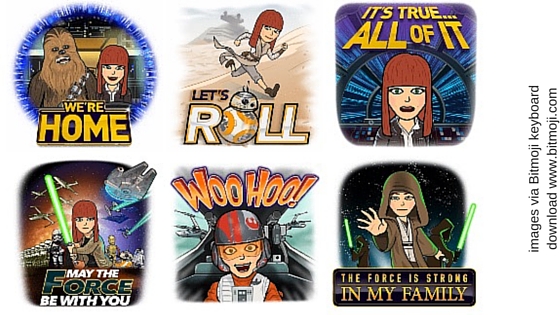 Star Wars is not just the biggest movie of right now, but of all time! So even if you were living in a cave (*not aware of what was going on around you*), you could definitely learn a thing or two if you had the Bitmoji keyboard. Check out the most popular quotes and see some puns, or a “play on words.” In the middle image on the top, you’ll see “Let’s Roll” with my Avatar running alongside BB-8, the droid who literally rolls around on his ball-shaped body. This plays with the expression “let’s roll” as in “let’s go” or “let’s get started”.
Star Wars is not just the biggest movie of right now, but of all time! So even if you were living in a cave (*not aware of what was going on around you*), you could definitely learn a thing or two if you had the Bitmoji keyboard. Check out the most popular quotes and see some puns, or a “play on words.” In the middle image on the top, you’ll see “Let’s Roll” with my Avatar running alongside BB-8, the droid who literally rolls around on his ball-shaped body. This plays with the expression “let’s roll” as in “let’s go” or “let’s get started”.
The next example, although not necessarily new, is Bitmoji’s Inside Out Avatars. This popular movie ranks top 10 on Rolling Stone, even top 2 on Rotten Tomatoes, and will help you understand and express emotions like JOY, ANGER, SADNESS, DISGUST, and FEAR.
Most importantly, related to English, these Avatars will help you learn interjections. An interjection is a spoken word/sound that expresses an emotion. When you’re feeling happiness, or JOY, you may often use the interjection: “YAY!”. Fear will also teach you interjections: “EEK!” which shows surprise, and “Uh Oh!” which represents worry.
When you are feeling unhappiness/sadness, you are likely to let out a sigh, or a long exaggerated breath. On the other hand, sometimes it’s common to laugh so hard, you cry – which is also an option on your Avatar keyboard (like the one you see on left, 2nd from the top).
#2: Trending hashtags
According to Ritetag, #healthyeating had 104 unique tweets per hour when I was writing this post, and this same hashtag has over 7,649,442 photos in Instagram’s collection.
The hashtag #ootd is even bigger, with 262 unique tweets per hour and 69,843,363 photos in the Instagram collection. That is a lot of photos being shared and a lot of captions to read in English. How can you learn from these hashtags? Well you can tweet, Instagram, and/or share your pictures using these hashtags, while also writing the caption in English! You don’t have to just use social media for pleasure, you can also use it for learning. Lindsay from Lindsay Does Languages and I will teach you all about that this Saturday in a live webinar: 19 Ways to Maximize Social Media for Language Learning. Interested? You can sign up here.
#3: Popular Slangs
Even though the word hangry (hungry + angry) was added to the Oxford dictionary, I think it can definitely still be seen as a slang word. What’s great about Bitmoji, is that it shows you the meaning of this word with its Avatar. On the other hand, “on fleek” is something you won’t find in the dictionary because fleek doesn’t really exist. That hasn’t stopped this expression from entering many people’s vocabulary, being written in magazines like Time, and discussed amongst celebrities on talk shows. In this video, at about minute 1:40 you can hear actor Kevin Spacey and host Jimmy Kimmel define this trending word:
Finally, I’ll admit to using “jelly” instead of what is really means jealous. In fact, I probably used it just the other day while texting with my friends. What I love most about this Bitmoji Avatar is though, is how it plays on the literal meaning of jelly, as in jam.
#4: Learn about Internet Trends
I have definitely participated in posting pictures of my cats on Caturday. Is there any crazy cat lady out there who hasn’t? Caturday is also a play with the word Saturday, because cat and sat rhyme (*they sound the same*), so while learning about trends you can also practice pronunciation. Now that you know about this term, you will begin to see the thousands and thousands of cat pictures that pop up (*appear*) across social media. You’re welcome!
Have you ever tried Internet dating, and if so, have you tried the popular app Tinder? On this app, when you see a picture and swipe right, or use your finger to move the image to the right, this means you approve of the person or find them attractive. So outside of the app, when you “swipe right“, you are saying or implying that you approve of it.
#5: Trendy Abbreviations and Acronyms
Abbreviations (*shortened forms of a word*) and acronyms (*a word formed from the first letters of the words in a full phrase*) are incredibly common, and not just in text. Let’s take the United States of America, for example, which is often referred to as the USA. In this keyboard, you can learn the acronym FOMO, fear of missing out, and use it in the appropriate situations. There were many more acronyms I taught in the last lesson, so remember to click the link at the top of this article. The last Avatar we’ll review today, I will admit isn’t the most polite of Bitmojis; however, is a word you could definitely hear on TV or in movies, so the lesson is valuable. MOFO is an abbreviation of the word motherfucker. Remember I said it wasn’t a polite one, as you’ll see if you look up the word motherf*&#r in the dictionary (you’ll see it’s a vulgar slang). So I would recommend not using this one with a boss, business partner, or stranger, but it could cause laughs amongst friends.
So, what was your favorite Avatar from today? What will you use today in your application of English? What upcoming Bitmojis would you like to see in the keyboard? Answer these and let me know what you thought about today’s lesson in the comment section below.
As always…
Happy Studying! ♥
TEACHERS: If you would like some tips on how to use Bitmojis in your lessons plans, if you would like to get your students motivated in the classroom and interact with one another then click here. You’ll read a related lesson about using this app to get your students talking and teaching one another. YAY for communicative learning!

